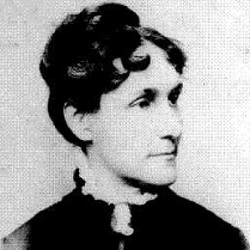Margaret Lea Houston – A Patron of the Arts

Fast Facts About Margaret
- Date of Birth: April 13, 1848
- Date of Death: March 12, 1906
- Place of Birth: Woodland Home, Huntsville, Texas
- Married Weston Lafayette Williams in 1866
- Five children
Born on April 13, 1848, in the Woodland Home in Huntsville, Texas, Margaret Lea “Maggie” Houston carried the weight of her father’s prominent legacy and her mother’s genteel Southern grace throughout her life. Her story offers unique insights into a time of significant transformation in the Southern United States.
Maggie was the third child and second daughter of Sam Houston, the renowned statesman, soldier, and politician, and his wife, Margaret Lea Houston. Sam Houston’s influence on his daughter was evident, shaping her character and values as she matured into a strong-willed, intelligent woman, somewhat mirroring her father’s own traits.
From a young age, Maggie demonstrated an avid interest in the written word, a passion nurtured by her father, who himself had been a remarkable orator and writer. Her academic journey at Baylor Academy in Independence marked a significant phase in her life, enhancing her literary skills and shaping her future endeavors. Her drive for writing was such that she eventually served as her father’s secretary, a testament to her remarkable talent.
The story of Maggie’s love life is equally captivating. At seventeen, she met and fell in love with Captain Weston Lafayette Williams, a fellow Baylor University student boarding at Nancy Lea’s house. They were wed in a simple ceremony at the Independence Baptist Church on October 17, 1866, a humble celebration that reflected the couple’s modest lifestyle.
The family initially lived on a farm at Labadie in Washington County, a testament to the agrarian roots of the region. However, after the death of her mother, they relocated to their family home in Independence. This move marked a new chapter in their lives as they raised their three sons and two daughters amidst the familial and historical ambiance of their ancestral home.
Even after her husband’s death, Maggie continued to lead an engaged and active life, deeply intertwined with the social and intellectual fabric of the time. In 1904, she relocated to San Antonio to live near her daughter. The vibrant city provided her with ample opportunities to engage with a community of intellectuals and artists, including the famous German-American sculptor, Elisabet Ney.
Margaret Lea Houston‘s life reflects the resilience and strength of Southern women who navigated the tumultuous times of the late 19th century. Her death on March 12, 1906, marked the end of an era, commemorated by a city and a state that honored her by flying flags at half-mast and tolling the city hall bell. Her life and legacy serve as enduring symbols of the South’s cultural and historical identity, leaving a lasting imprint on the annals of Texas history.
